The problem with starting a wildlife challenge in January, especially one which involves photography, is that January in the UK is frequently cold, always dark and this year, very, very wet. Progress on the challenge has been slow thanks to a combination of these factors, and the unfortunate necessity of going to work five days a week.
As a result of all of this, the only addition to the list prior to the weekend was the less than spectacular, but still very welcome Winter Moth, which was the only moth daft enough to be lured in to the moth trap on Tuesday night.
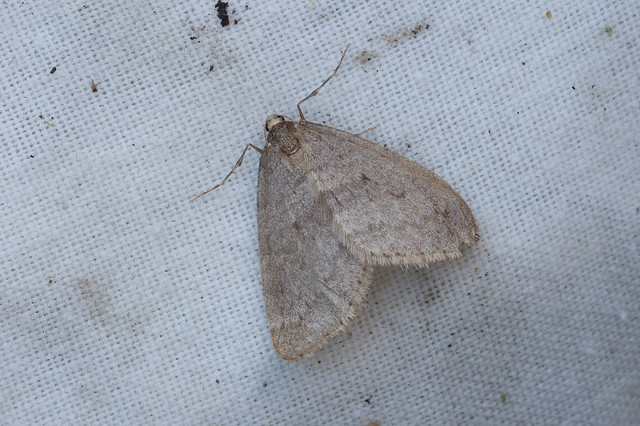 |
| Winter Moth |
Fortunately the sun was out all day today, giving me a good opportunity to make a more substantial addition to the list. I started off with the macro lens attached, so naturally the local sparrows decided to pose on top of the brambles.
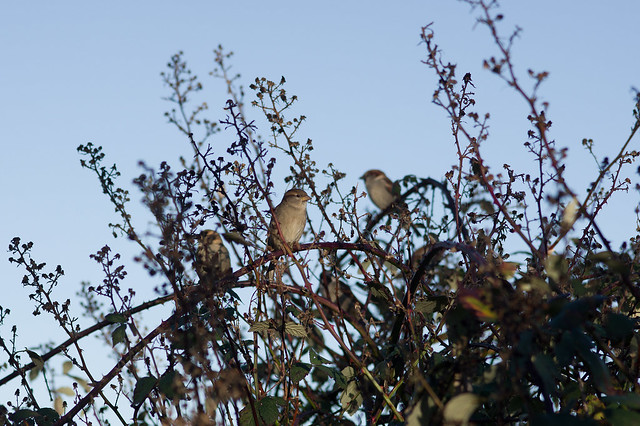 |
| A few of the local sparrows |
I then found some more conventional fare for the macro, in the form of the common agricultural weed, Fat Hen, and a patch of Sweet Violets which are already starting to flower, possibly a result of the incredibly mild winter we're having. Another springlike sign was the hawthorn buds on the verge of bursting.
 |
| Fat Hen |
 |
| Sweet Violet |
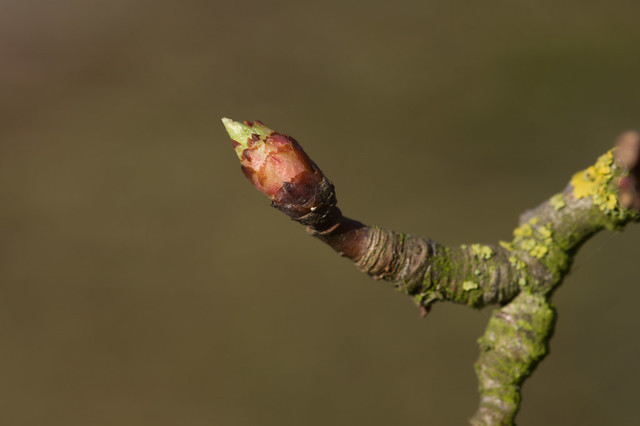 |
| Hawthorn bud |
The yellowhammer flock was feeding on the field again, giving a me a chance to improve on the rubbish photo I took last week, still nothing spectacular, but at least you can see the yellow head in this shot!
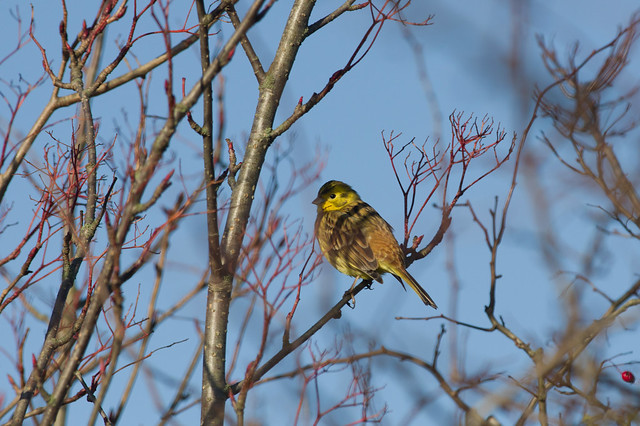 |
| Male Yellowhammer |
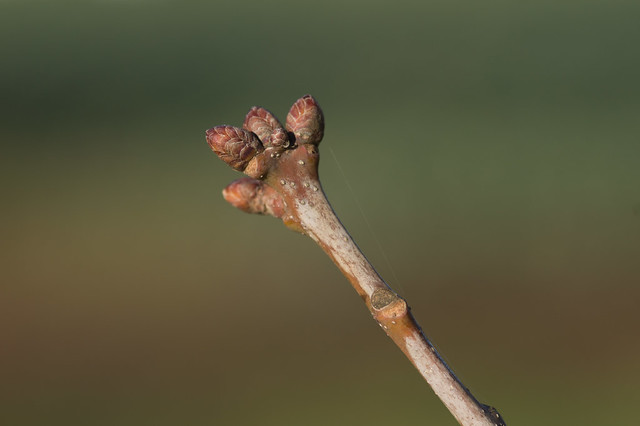 |
| Pedunculate Oak buds |
After that I had a productive spell of photographing various trees and shrubs. For the first time I took a closer look at some of the ferns in the local wood, and in addition to the ubiquitous bracken found that there were at least two other species present in the damper areas. I've tentatively identified these as Male Fern and Broad-buckler Fern, but I'd be happy to be corrected if I've got either of them wrong!
 |
| Dog Rose, very hip! |
 |
| Elder buds |
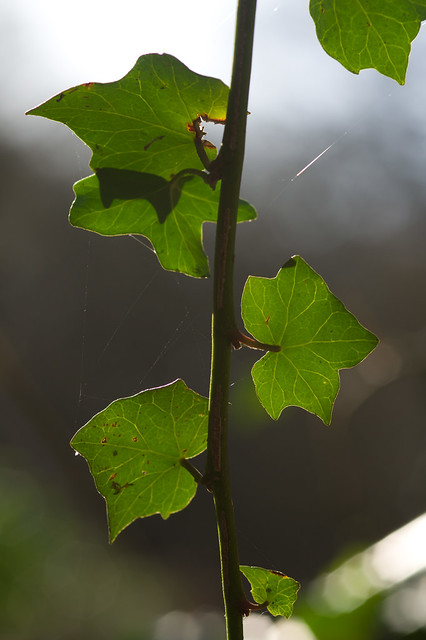 |
| Ivy |
 |
| Male Fern |
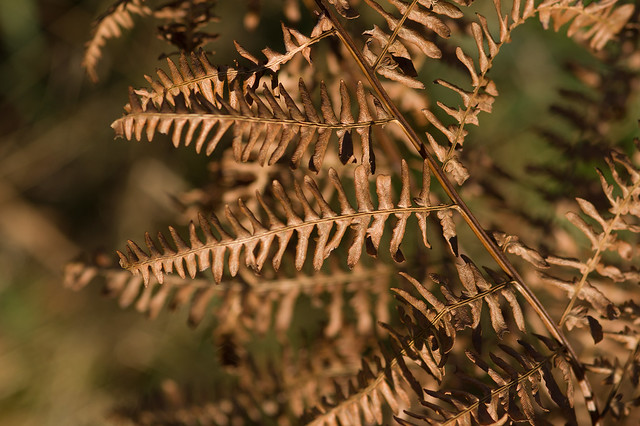 |
| Bracken |
 |
| Broad-buckler Fern |
I also found a couple of leaf mines - the marks left by insect larvae which have developed inside the leaf of the plant. These will be a lot easier to find later in the year when there are more leaves around, but even in the depths of winter bramble and holly at least have both leaves, and mines on those leaves. I'll be keeping an eye out later in the year for the adult insects to go along with these pictures of their mines.
 |
| Holly Leaf Miner |
 |
| Mine of Stigmella aurella - the Golden Pigmy |
Up towards the quarry I was just thinking that I should make the effort to find some fungi, when I spotted this strange black gelatinous looking one growing on an oak bough. I haven't worked out what it is yet, perhaps a candidate for ispot?
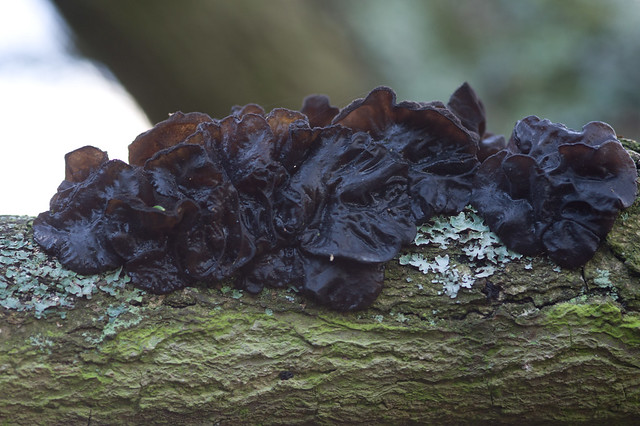 |
| Mystery fungus |
There were still some easy trees to add to the list, but not that much else as the temperature started to drop. A flowering umbellifer was a bit of a surprise to find in the middle of the woods, think this is Hogweed, but again corrections welcome. Finding some gorse in flower was a lot less surprising, apparently there's a saying "When gorse is out of bloom, kissing is out of season"!
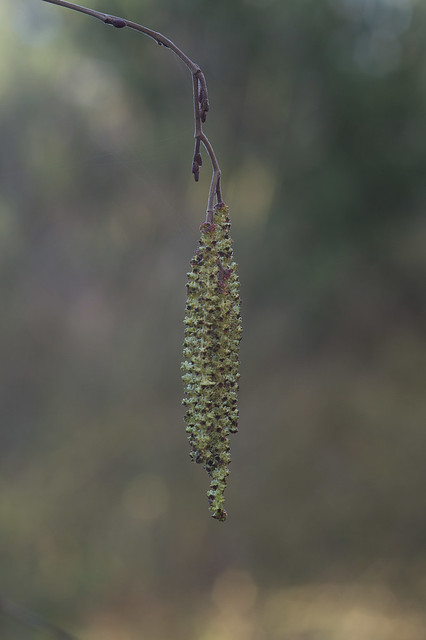 |
| Alder Catkin |
 |
| Larch |
 |
| Broom |
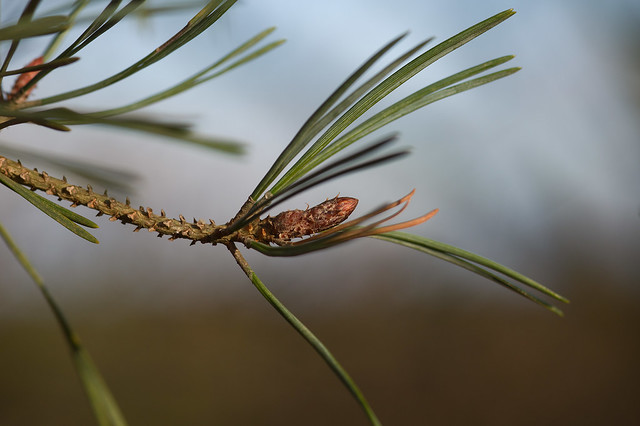 |
| Scot's Pine |
 |
| Downy Birch |
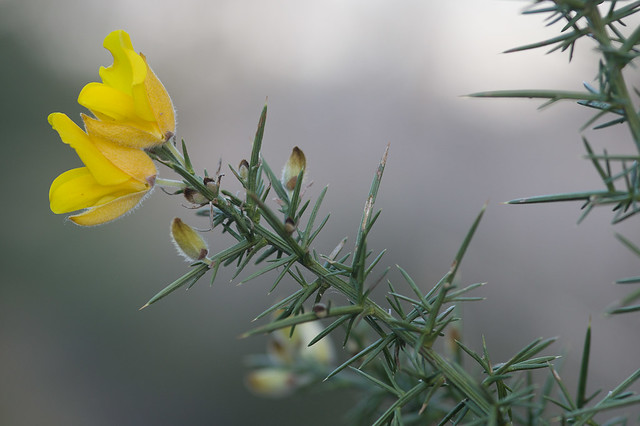 |
| European Gorse |
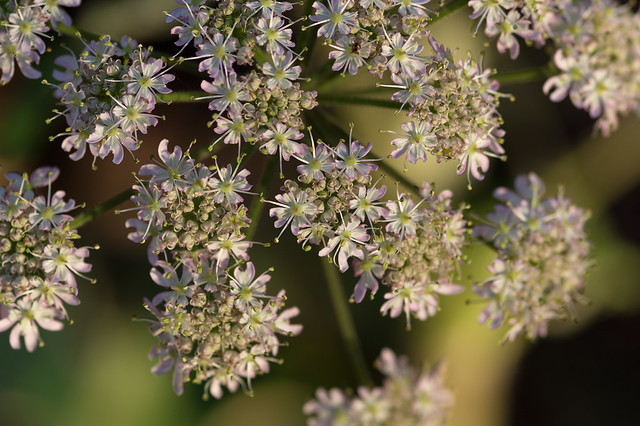 |
| Hogweed flowers |
 |
| Birch Polypore |
Finally for the day, a single young oak tree had been unfortunate enough to attract the attention of at least two species of gall forming wasps. These non-descript little insects have the remarkable ability to hijack the growing apparatus of the plant to create a nursery for their offspring, although in a further twist to the story there are then even more wasps which search out the galls to lay their own eggs in!
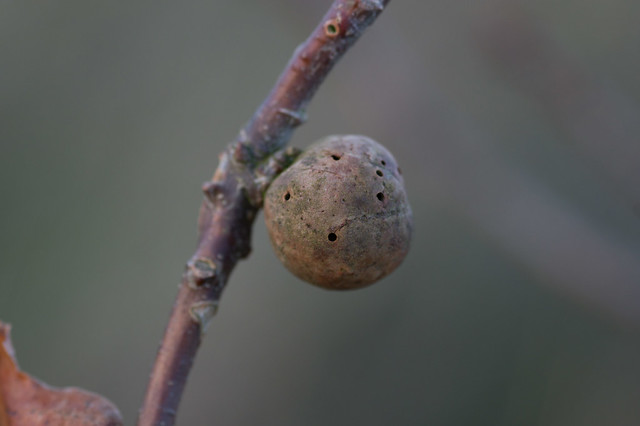 |
| Oak Apple, made by Biorhiza pallida |
 |
| Cola-nut Gall made by Andricus lignicola |
All in all a pretty productive day. Progress is likely to slow as I run out of trees and really obvious plants to photograph, but hopefully the weather will stay good and I'll be able to fill in some of the more obvious holes in the bird list, if not then I go always go crawling round the garden looking for springtails!
Total 37 species


























No comments:
Post a Comment